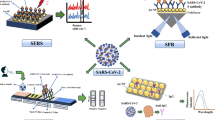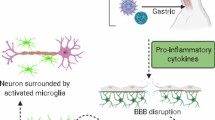Abstract
Betanodaviruses are the causal agents of viral encephalo-retinopathy, an infectious disease affecting more than 40 marine fish species, characterized by high morbidity and mortality. Because of its severe impact, robust diagnostic tools are required. The aim of this work was to develop and validate a real-time TaqMan PCR assay to detect betanodaviruses in clinical specimens by amplifying a conserved region of the RNA2 strand. The method proved to be specific and sensitive, being capable of detecting as low as 10 TCID50/ml. For clinical validation, samples from 100 marine fish were collected during a natural outbreak of disease and tested by three distinct laboratory methods, namely real-time TaqMan PCR, RT-seminested PCR and virus isolation. The results indicated optimal agreement between tests. The assay that was developed is capable of detecting members of all of the betanodavirus genetic groups currently described and can be considered a valid alternative to the time-consuming and contamination-prone nested PCR.


Similar content being viewed by others
References
Agresti A (1990) Categorical data analysis. Wiley, New York, pp 365–370
Athanassopoulou F, Billinis C, Psychas V, Karipoglou K (2003) Viral encephalopathy and retinopathy of Dicentrarchus labrax (L.) farmed in fresh water in Greece. J Fish Dis 26:361–365
Bovo G, Nishizawa T, Maltese C, Borghesan F, Mutinelli F, Montesi F, De Mas S (1999) Viral encephalopathy and retinopathy of farmed marine fish species in Italy. Virus Res 63:143–146
Castric J, Thiery R, Jeffroy J, de Kinkelin P, Raymond JC (2001) Sea bream Sparus aurata, an asymptomatic contagious fish host for nodavirus. Dis Aquat Org 47:33–38
Dalla Valle L, Zanella L, Patarnello P, Paolucci L, Belvedere P, Colombo L (2000) Development of a sensitive diagnostic assay for fish nervous necrosis virus based on RT-PCR plus nested PCR. J Fish Dis 23:321–327
Dalla Valle L, Negrisolo E, Patarnello P, Zanella L, Maltese C, Bovo G, Colombo L (2001) Sequence comparison and phylogenetic analysis of fish nodaviruses based on the coat protein gene. Arch Virol 146:1125–1137
Dalla Valle L, Toffolo V, Lamprecht M, Maltese C, Bovo G, Belvedere P, Colombo L (2005) Development of a sensitive and quantitative diagnostic assay for fish nervous necrosis virus based on two-target real-time PCR. Vet Microbiol 110:167–179
Edwards K (2004) Performing real-time PCR. In: real-time PCR an essential guide. Horizon bioscience, Norfolk
United EPA States Environmental Protection Agency (2004) Quality assurance/quality control guidance for laboratories performing PCR analysis on environmental samples. US Environmental Protection Agency, Cincinnati
FDA, Food and Drug Administration (2005) Nucleic acid based in vitro diagnostic devices for detection of microbial pathogens. http://www.fda.gov/cdrh/oivd/guidance/1560.pdf. Accessed 31 Jan 2008
Frerichs GN, Rodger HD, Peric Z (1996) Cell culture isolation of piscine neuropathy nodavirus from juveniles seabass, Dicentrarchus labrax. J Gen Virol 77:2067–2071
Gagné N, Johnson SC, Cook-Versloot M, MacKinnon AM, Olivier G (2004) Molecular detection and characterization of nodavirus in several marine fish species from the northeastern Atlantic. Dis Aquat Org 62:181–189
Gomez DK, Sato J, Mushiake K, Isshiki T, Okinaka Y, Nakai T (2004) PCR-based detection of betanodaviruses from cultured and wild fish with no clinical signs. J Fish Dis 27:603–608
Gomez DK, Baeck GW, Kim JH, Choresca CH Jr, Park SC (2008) Molecular detection of betanodaviruses from apparently healthy wild marine invertebrates. J Invertebr Pathol 97:197–202
Grotmol S, Nerland AH, Biering E, Totland GK, Nishizawa T (2000) Characterization of the capsid protein gene from a nodavirus strain affecting the Atlantic halibut Hippoglossus hippoglossus and design of an optimal reverse-transcriptase polymerase chain reaction (RT-PCR) detection assay. Dis Aquat Org 39:79–88
Grove S, Faller R, Soleim KB, Dannevig BH (2006) Absolute quantification of RNA by a competitive real-time RT-PCR method using piscine nodavirus as a model. J Virol Methods 132:104–112
Hellberg H, Kvellestad A, Dannevig B, Bornø G, Modahl I, Haldorsen RN, Vik-Mo F, Ottesen K, Saetre EM, Sindre H (2010) Outbreaks of viral nervous necrosis in juvenile and adult farmed Atlantic cod, Gadus morhua L., in Norway. J Fish Dis 33:75–81
Iwamoto T, Mori K, Arimoto M, Nakai T (1999) High permissivity of the fish cell line SSN-1 for piscine nodaviruses. Dis Aquat Org 39:37–47
Johansen R, Sommerset I, Tǿrud B, Korsnes K, Hjortaas MJ, Nilsen F, Nerland AH, Dannevig BH (2004) Characterization of nodavirus and encephalopathy and retinopathy in farmed turbot, Scophthalmus maximus (L.). J Fish Dis 27:591–601
Korsnes K, Devold M, Nerland AH, Nylund A (2005) Viral encephalopathy and retinopathy (VER) in Atlantic salmon Salmo salar after intraperitoneal challenge with a nodavirus from Atlantic halibut Hippoglossus hippoglossus. Dis Aquat Org 68:7–15
Mahy BWJ, Kangro HO (1996) Virology methods manual. Academy Press, London
Mori KI, Nakai T, Muroga K, Arimoto M, Mushiake K, Furusawa I (1992) Properties of a new virus belonging to nodaviridae found in larval striped jack (Pseudocaranx dentex) with nervous necrosis. Virology 187:368–371
Munday BL, Kwang J, Moody N (2002) Betanodavirus infections of teleost fish: a review. J Fish Dis 25:127–142
Nagai T, Nishizawa T (1999) Sequence of the non-structural protein gene encoded by RNA1 of striped jack nervous necrosis virus. J Gen Virol 80:3019–3022
Nerland AH, Skaar C, Eriksen TB, Bleie H (2007) Detection of nodavirus in seawater from rearing facilities for Atlantic halibut Hippoglossus hippoglossus larvae. Dis Aquat Org 73:201–205
Nishizawa T, Furuhashi M, Nagai T, Nakai T, Muroga K (1997) Genomic classification of fish nodaviruses by molecular phylogenetic analysis of the coat protein gene. Appl Environ Microbiol 63:1633–1636
OIE, World Organization for Animal Health (2006) Encephalopaty and retinopathy. In: Manual of diagnostic tests for aquatic animals. Chapter 2.1.7., pp 169–171
OIE, World Organization for Animal Health (2009) Validation and quality control of polymerase chain reaction methods used for the diagnosis of infectious diseases. http://www.oie.int/eng/normes/mmanual/A_summry.htm. Accessed 6 May 2009
Olveira JG, Soares F, Engrola S, Dopazo CP, Bandin I (2008) Antemortem versus post mortem methods for detection of betanodavirus in Senegalese sole (Solea senegalensis). J Vet Diagn Invest 20:215–219
Peducasse S, Castric R, Thiery R, Jeffroy J, Le Ven A, Baudin Laurencin F (1999) Comparative studies of viral encephalopathy and retinopathy in juvenile sea bass Dicentrarchus labrax infected in different ways. Dis Aquat Org 36:11–20
Ross K, McCarthy U, Smail DA, Wood P, Stuart D, Rough EI, Bruno W (1994) An outbreak of viral haemorrhagic septicaemia (VHS) in turbot (Scophthalmus maximus) in Scotland. EAFP Bulletin 14: 231–214
Sommerset I, Nerland AH (2004) Complete sequence of RNA1 and subgenomic RNA3 of Atlantic halibut nodavirus (AHNV). Dis Aquat Organ 58:117–125
Starkey WG, Millar RM, Jenkins ME, Ireland JH, Muir KF, Richards HR (2004) Detection of piscine nodavirus by real-time nucleic acid sequence based amplification (NASBA). Dis Aquat Org 59:93–100
Tamura K, Dudley J, Nei M, Kumar S (2007) MEGA4: Molecular evolutionary genetics analysis (MEGA) software version 4.0. Mol Biol Evol. doi:10.1093/molbev/msm092
Thiery R, Raymond JC, Castric J (1999) Natural outbreak of viral encephalopathy and retinopathy in juvenile sea bass, Dicentrarchus labrax: study by nested reverse transcriptase-polymerase chain reaction. Virus Res 63:11–17
Thiery R, Raymond JC, Castric J (1999) Two isolates of sea bass, Dicentrarchus labrax L., nervous necrosis virus with distinct genomes. J Fish Dis 22:201–207
Totland GK, Grotmol S, Morita Y, Nishioka T, Nakai T (1999) Pathogenicity of nodavirus strains from striped jack Pseudocarancs dentex and Atlantic halibut Hippoglossus hippoglossus, studied by waterborne challenge of yolk-sac larvae of both teleost species. Dis Aquat Organ 38:169–175
Acknowledgments
This study was supported by the Italian Ministry of Health (RC IZSVe 02/06). The authors thank Dr. Cristian De Battisti for the technical advice (IZSVe), Dr. Marzia Mancin for the statistical analysis (IZSVe), Dr. William Dundon for critical editing of the manuscript (IZSVe) and Dr. Hilde Sindre (National Veterinary Institute, Norway) for providing betanodavirus isolates of Atlantic origin.
Author information
Authors and Affiliations
Corresponding author
Rights and permissions
About this article
Cite this article
Panzarin, V., Patarnello, P., Mori, A. et al. Development and validation of a real-time TaqMan PCR assay for the detection of betanodavirus in clinical specimens. Arch Virol 155, 1193–1203 (2010). https://doi.org/10.1007/s00705-010-0701-5
Received:
Accepted:
Published:
Issue Date:
DOI: https://doi.org/10.1007/s00705-010-0701-5




